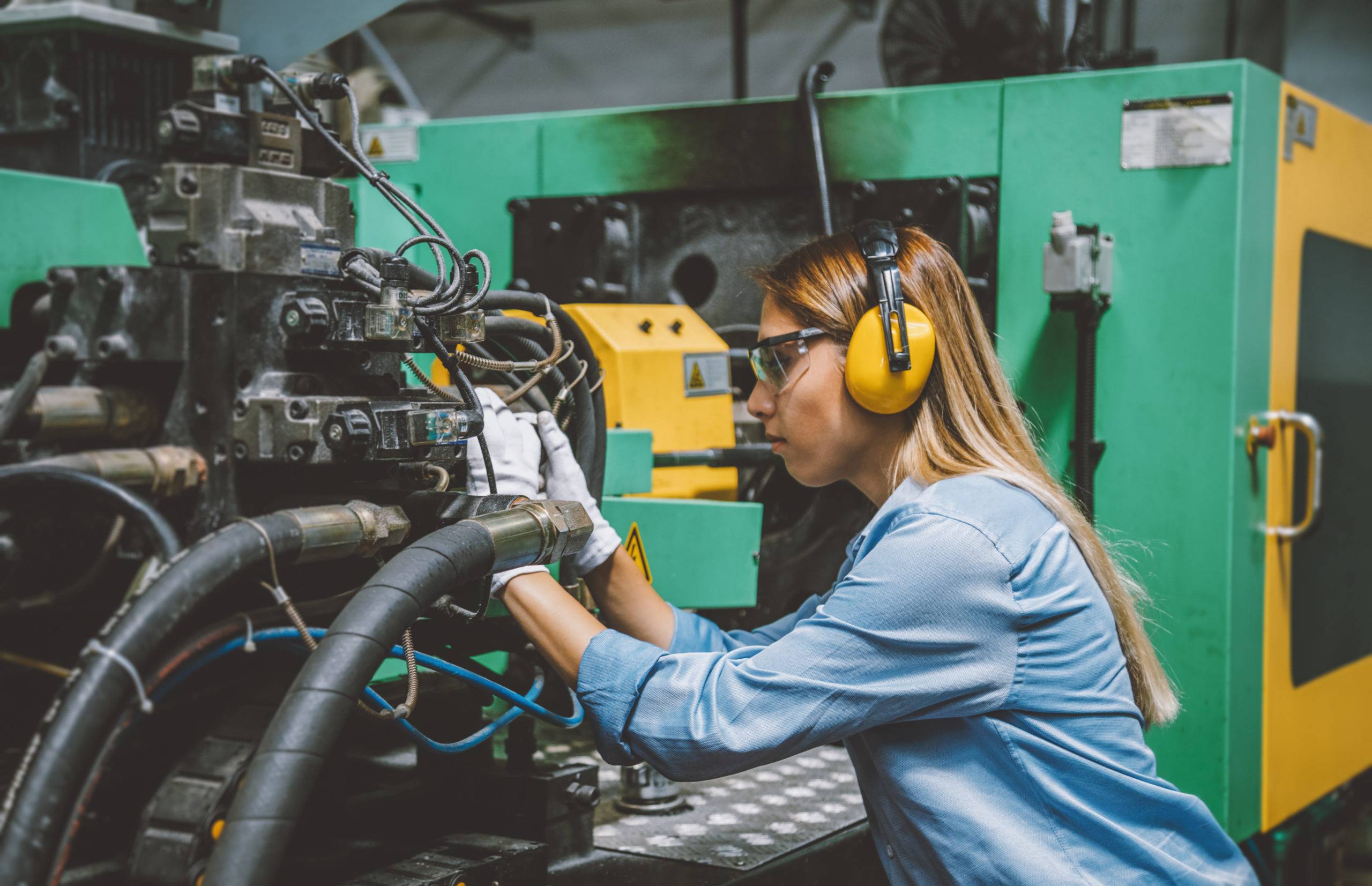
A Change is Gonna Come
Do you personally know any women that work in manufacturing? If you can answer yes, give that woman a high five, pat on the back, and a crap-ton of respect. She contributes to the 30% female manufacturing workforce –disproportionate with the 50% female overall workforce. It takes guts, perseverance and patience to be female in this industry. Despite the many barriers, more women are getting on board to reap the benefits of working in a trade.
THE BENEFITS
Many of the benefits for women in skilled trades are the same benefits that men receive. The schooling is affordable and quick. Many tradesmen can start earning money 2 years into their schooling, usually with little to no debt. Job security is at a maximum, especially “post-pandemic,” as demand is increasing exponentially. There are lucrative travel opportunities in the trades, and a lot of room for career growth that can even end in entrepreneurship. There is one thing, however, that men cannot claim as a benefit: the opportunity to be a role model for other females exploring career options. Examples of hard-working women being successful in this industry is the most effective way of recruiting more to the field.
THE CHALLENGES
Since the founding of our nation men have dominated the skilled trades. Things began to change during World War II when the men were required to participate in the war, leaving women to fill the necessary unfilled roles in common trades (1). While we are not participating in a world war now, we do have a significant number of women currently working–or interested in working–in skilled trades. But we are still not where we should be. There are systemic barriers that women have had to break through in order to make way in their trade. Some of these barriers include workplace acceptance, fear of being laid off for reporting safety concerns, gender discrimination, the masculine culture, and sexual harassment (4). Other barriers that more commonly affect women in trades are physical limitations and the lack of available childcare (3).
THE REALITY
While the manufacturing workforce is 30% women, a quarter of those women are looking to leave because of the inflexible schedule and work/life balance needs. This is a problem considering the number of positions that will go unfilled in the next 9 years is projected at 2.1 million. Another source estimates that by 2028, 3 million jobs will be available in the skilled trades. Women will be the largest untapped pool of candidates for these jobs in the years to come. If that doesn’t spark some change in recruiting, I’m not sure what will.
WHERE DO WE GO FROM HERE?
Just like our struggle to overcome other systemic barriers, it takes time and action. Women recruiting other women will be the biggest catalyst in diversifying the trades. So how do we get women to buy into the idea that this “worth it?” It starts with improving the work environment. Increasing the quality of training and education for all workers can change overall perspective and increase awareness. Enforcing zero-tolerance policies for sexual harassment, discrimination, and unequal treatment makes space for women to feel supported and empowered each day at work. The opportunity for mentorship can play a significant role in the work climate. Women who can go to someone they relate to and learn from feel more confident in tackling the similar barriers they face.
For more resources on female community in skilled trades, trade school opportunities, and scholarships look no further than this site.
Source Materials:
1) Why More Women are Considering Careers in the Trades
2) Building the Next Generation of Skilled Trades Workers Starts With Women
